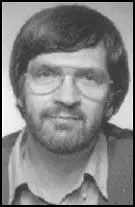Robert J. Groden

Robert J. Groden first became interested in the assassination of John F. Kennedy in 1964. A harsh critic of the Warren Commission, he was the Staff Photographic Consultant to the House Select Committee on Assassinations and a consultant on Oliver Stone's film JFK.
Groden is the author of several books on the assassination of High Treason: The Assassination of President John F. Kennedy: What Really Happened (1989), High Treason: The Great Cover-Up: The Assassination of President John F. Kennedy (1992), The Killing of a President: The Complete Photographic Record of the JFK Assassination, the Conspiracy, and the Cover-up (1993) and The Search for Lee Harvey Oswald: A Comprehensive Photographic Record (1995).
Primary Sources
(1) Robert J. Groden, The Search for Lee Harvey Oswald (1995)
On Monday, August 12, 1963, Lee and Carlos Bringuier appeared in Second Municipal Court at 1:00 p.m. The charges were dismissed against Bringuier, and Lee was fined $10.00. Marina Oswald confirmed that Lee actually wanted to be arrested. He wanted the exposure. He wanted to get the publicity as a pro-Castroite. She referred to this as "self-advertising." Marina was right, but the question still remains: Why?
Lee was back handing out his Fair Play for Cuba Committee flyers on the streets of New Orleans on August 16. He had hired three men to help with distribution: odd, since he was nearly without funds for himself and his family. They stood in front of the International Trade Mart, whose director, Clay Shaw, would be charged with conspiracy to assassinate President Kennedy four years later by New Orleans District Attorney Jim Garrison. Somebody (probably Lee himself or, possibly, Carlos Bringuier) called WDSU-TV and other members of the New Orleans news media to announce that he was distributing the pro-Castro literature. More self-advertising. That evening's television news broadcast his activity, and the resulting bad publicity made it nearly impossible for him to obtain employment.
(2) Robert J. Groden, The Search for Lee Harvey Oswald (1995)
How to pin the president's death on Castro? Simple. Have a pro-Castroite accused as the assassin. The perfect candidate for "designated patsy" was Lee Harvey Oswald.
In all likelihood, the CIA kept Oswald on as an inactive agent, as perhaps they had been since his defection to the USSR. In September 1962, he went to work for the FBI as a $200-per-month informant (Warren Commission executive session, January 27, 1964). But on what or whom could he inform? One possibility is that he was supposed to observe the White Russian community in and around Dallas, which included the late George DeMohrenschildt.
A very probable scenario is that in mid-1963 Lee Oswald was reactivated by the CIA and sent to New Orleans to create a pro-Castro cover by starting the New Orleans chapter of the Fair Play for Cuba Committee. It appears at this point that CIA agent payroll number 110669 had been ordered by his superiors to furnish himself with a pro-Castro cover in order to enable him to enter Cuba by way of Mexico City possibly in order to infiltrate Cuban intelligence, or perhaps to try to assassinate Castro. Possibly, those members of the CIA involved in the Kennedy assassination plot were setting Oswald up as "the missing link," the connection between Fidel Castro and the assassination.
(3) Giles Hugo, review of Robert J. Groden's, The Killing of a President (1993)
The most intriguing new contribution to the Kennedy debate, to my mind, is undoubtedly Robert J. Groden's The Killing of a President. The subtitle - 'The Complete Photographic Record of the JFK Assassination, the Conspiracy, and the Cover-up' - spells out its chief attraction - more than 650 pix, many in colour, which conclusively trash any lingering 'lone nut assassin' or 'magic bullet' fantasies. The graphic evidence presented by Groden points to one conclusion: JFK was butchered in a brilliantly conceived and ruthlessly executed act of extermination. Period.
It makes the Warren Commission's findings appear more than just ridiculous - in fact they would seem to cloak deeply sinister motives and bizarre operations. The perpetrators of the assassination have effectively escaped justice for three decades, and in the cover-up process many individuals have been harassed or even 'terminated with extreme prejudice'...
The only fault I can find with Groden's book it is that a small proportion of the evidence presented seems trivial or just highly improbable - I am a bit dubious about the relevance of some of the entries from the 'Mysterious Death Project', a listing by writer Penn Jones of over 300 people 'associated' - some very obscurely - with the assassination, who have since died or disappeared. But even while picking through such minor dross, some absolute gems emerge, such as: '(Warren) Commission member Congressman Hale Boggs did not believe the single bullet theory and said, "I had strong doubts about it." In a speech in 1971, Boggs accused the FBI of tapping his phone... and publicly denounced the Bureau's "gestapo tactics". Boggs disappeared, never to be found, while on a flight to Alaska.'

